#srd builds
Text

name: TempOSt
race: Warforged
class: Sorcerer (Storm)
characterisation: While designed to be the ultimate weapon to turn the tide of a war, their creation was plagued with problems from its start. From miscommunications, to attacks on the base, to straight-up sabotage - it was increasingly clear the weapon wouldn't be finished in time, and so the project was abandoned, and soon after the base was destroyed as the war raged on.
Many years passed, the war ended, adventurers returned to their natural habitat, and some happened to come across the ruined base one day. Through some fate - or luck - the party happened to activate the weapon, which... awoke? They were awake? But what was their purpose? To the party's initial alarm, the weapon looked to them as their creator; in order that they not become a menace they were taken in, but over time the party and the weapon gained affection for each other.
It was not to last. A raider ambush attacked the party, intending to steal and sell the weapon for scrap. As the fight raged on, in a mode of panic, the weapon charged up, and brought a storm down upon the raiders... clipping themselves and some of the party, too. While the surviving raiders fled, the weapon patched up the wounds of their friends, wrote a clumsy 'SORRY', and struck out on their own, looking for a reason for their existence...
-
inspiration: The Defect (Slay the Spire)
been playing a lot of this lately, though heavily modded. ironically Defect is my worst vanilla character but also my favourite design...
anyway. warforged is a clear choice; storm sorcerer too, because in my experience vanilla Defect tends to go for elec orbs (especially since starting with one), and storm sorc can still utilise some things that'd work well for frost/dark orbs, such as mage armor or shadow blade. and, well - chromatic orb exists. honestly even with all the new orbs mods add I generally go for either elec or builds that just get me random orbs...
-
share link: https://www.heroforge.com/load_config%3D32911849/
#dnd#heroforge#the defect#slay the spire#sts#srd builds#honestly all the vanilla character designs are cool though#also one of my mods changed ironclad's name#to ironchad#and I don't know which one it was#I should make the others at some point too
26 notes
·
View notes
Photo

name: Tialoch Fihrann
race: Githzerai
class: Sorcerer (Clockwork)
characterisation: Jittery, introverted, and anxiety-prone, Tialoch - much to their discomfort - is a surprisingly popular person. Word spreads quickly of their strange habit - their insistence to go on treasure hunting trips, but take little of the treasure. Rumours spread fast, too - are they in it for power? Glory? Just for fun?
They were born into a family of keen adventurers, and always wanted to join in, but were told to wait until they were older. They anticipated the day, and were so happy when they were finally allowed to participate - only for the expedition to go wrong, and their family to be lost in the chaos of Limbo.
Since that day, they’ve been guilt-wracked, wanting to prevent others from suffering the same pain - but the only way they know how is to go with groups and protect them, and hope that when they leave an area less people will want to adventure. But they ignore - accidentally or intentionally - that their presence boosts the desire for exploration. And despite everything, deep down they still have a love for adventuring they try to bury...
-
inspiration: Claydol
today on VERY abstract, we have a mon I feel is underappreciated. I went with githzerai for the psychic aspect - -zerai specifically mostly because of shield, but the class was a very difficult one. eventually I went with clockwork for the artificial nature, for fitting particularly well with a githzerai, and because Baltoy is about literal balance being a spinning top. but this is one where a lot of things could fit nicely (although I would recommend a spellcaster - if not going clockwork, try a class that can’t normally cast shield but that would benefit from it, perhaps?)
-
share link: https://www.heroforge.com/load_config%3D30202102/
#pokemon#claydol#hoenn#dnd#heroforge#githzerai#sorcerer#srd builds#but seriously Claydol is cool#and I'm so mad that it's the worst starter in the hack snakewood#because you have to fight a dark-type pretty early on#and if you don't know it's coming you might only have confusion#snakewood was heckin wild#it's basically pokemon zombie apocalypse#but from the old days of rom hacks where#quality was. not the first priority#to be completely fair the tools back then weren't great#for example quartz' writing is. bad.#but from a technical perspective#it did very well with what was available at the time#but if you must play it play as the male protagonist#trust me on this one#playing as male protag is creepy but playing as female is MUCH worse
6 notes
·
View notes
Text
System Overview - LUMEN
This week has been a break from my regular recommendations to cover a few popular game systems and talk about what makes them tick. This week, we're covering the fast-paced combat-friendly LUMEN system.
This is all the systems I'll be covering this week, but I hope to do some more system overviews in the future!

LUMEN is a game system originating from Spencer Campbell of GilaRPGs, for use in his game LIGHT. It has gained popularity over the past few years due to its ability to replicate fast, powerful combat, and a simple set of rules.


As a disclaimer, I haven’t played any LUMEN games yet (although I really really want to give NOVA a go). What I have seen is a consistent amount of high-quality, exciting games being released over the past few years using the LUMEN system. The SRD is only 13 pages long, and the pieces are simple enough to pick up, re-mix, and turn into something engaging, which makes LUMEN a great option for new game designers - especially since the designer really wants to see what people are making with this toolkit.
So, let’s talk about some of the pieces that make up this game.

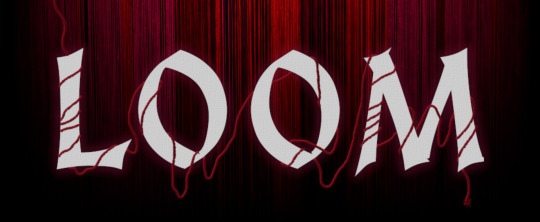
Attributes as Approaches
LUMEN gives your characters 3 stats that define how they approach an obstacle, rather than defining a specific skill. You’ll have something for raw power, one for quickness and speed, and one for precision and details. Your characters are expected to be professionals, the best of the best. Of course they know how to fight - this a power fantasy, after all. By focusing on an approach rather than a list of skills, these stats are also flexible: if you are using your raw power, you could open a door, swing a sword, or pull someone back from a ledge.
Depending on the game you’re using, the names for your approaches may differ. In Hedge, your approaches include Might, Sleight and Bright. In LOOM, these are re-tooled into Passion, Fleetness and Serenity.
This way of building a character is very good for players who may not want to juggle a number of different values in their head, and keeps the table focused on what the battle looks like more than anything else. It also makes a statement on what kinds of actions your characters don’t need to bother rolling for. No perception checks, minimal social obstacles, and don’t bother doing a memory check in this system. In LUMEN, you’re here to kick ass.


Dice Pools & Staggered Success
The number attached to your selected approach determines how many dice you roll to do an action. The highest number rolled is the only result you need to focus on.
Similar to Blades in the Dark and Powered by the Apocalypse, LUMEN uses a series of staggered successes. However, unlike the previous two games, success is a little more likely - 2/3 of the time, you’ll succeed. On a 1-2, the action failed with a consequence. On a 3-4, the action succeeds with a complication. On a 5-6, the action succeeds, no problems in sight. The difference in probability compared to Blades is one decision that indicates how powerful your characters are; they’re less likely to fail on any given roll.
To add a layer of complexity, you can include specific scenarios that determine how many dice you roll. For example, in Apocalypse Frame, there is a difference between rolling while inside or outside of your mech. When outside of your mech, a character subtracts 1 dice from their dice pool, and when attacking with your mech, you use a number attached to your Armament, rather than your Attributes. There are also character class abilities that may give you extra dice, such as the Ancient Technique ability attached to the Ancient class in Deathless. These abilities will only give you extra dice in very specific situations.


Character Classes
One thing is common among all three of the systems that I’ve talked about this week and that’s pre-packaged character abilities. LUMEN doesn’t use playbooks though, possibly because the characters are so lightweight that they wouldn’t take up that much space on a piece of paper.
Your class will come with special moves, abilities or gear that sets you apart, and will likely also define your play style. In Black Hole Era, for example, you are spaceships with system arrays and weapon bays. A Warlord ship has powerful long-range particle beams, while an Inquisitor ship has the ability to teleport or turn invisible.
That being said, you don’t have to use character classes with this system. In Wild Duelist, the game presents the character options as either a static stat build, from which you choose a few different options, or a character life path, in which you roll randomly to determine your heritage, weapons, approach scores and special powers.
Your character powers will usually come with a few important pieces of information: how they affect the field of play, what their range is, and how much it will cost you to use them. You do not roll to use your powers: you are powerful characters, and when you choose to do something cool, it works. In some games, your powers can be get more powerful as your character advances, or have tags added to increase range or damage dealt. Because LUMEN is meant to replicate combat-heavy video games, it also is designed to replicate the ability to customize your character to match the combat style that you prefer.



Room to Add Complexity
The LUMEN system is quick and only has a few core pieces, but there’s plenty of room to add more complexity in order to incorporate factions, long campaigns, and special details.
In Emblems of Their Dying Breaths, characters dig into dungeons that are procedurally-generated using a deck of playing cards. .brawl centres its combat on a map, using miniatures to help your players strategize as they fight in a cyberpunk arena. Clean-Up Crew diversifies the resources needed to pay for special powers, making enemy drops more interesting - and more necessary, if you’re going to find the specific resource you need.
The original designer is also updating and re-designing LUMEN, with the plans to release a LUMEN 2.0 SRD that does away with dice, health, and a few other pieces. You can check out some of his design thoughts on his YouTube channel, and take a peek at how this new version of LUMEN will play out in his game DUSK.
Meanwhile, let’s talk about some more games in the LUMEN series that I have yet to highlight on this blog.




Brawl City is a Street-Fighter game, still in development.
Dust is a game about surviving in a post-apocalyptic world, inspired by works such as The Book of Eli, and 9.
Photon is a two-player game about fighting a Singularity trying to consume the world.
paktbound is inspired by Dishonored and shackles your characters to a Stranger who sends them on heists in a rotten world.
If you want to check out more LUMEN games, there's a compiled list of games kept by Spencer Campbell, as well as a LUMEN collection that I'm adding games to as I find them.
Do you have any favourite LUMEN games? What kind of video game do you think would work well for this system? Share them in the comments and tags!
153 notes
·
View notes
Text
OGL misconceptions
Since I am still seeing a lot of misinformation out there, I figured I'd do a fact check post. Note that I do not personally have a copy of the leaked draft; some resources are given at the end of the post. See also the 2000 OGL v1.0a here. This is noncomprehensive, is only touching on some of the things I've seen most commonly in the tags [sidebar: the only tag I check regularly is the Critical Role tag, and much of what I've seen on Tumblr is coming from people spamming that tag for general D&D content that only tangentially mentions CR, so...stop doing that.] Finally, this is based on what is a draft, and there are quite possibly going to be updates to the final document. I would also assume that the January 13th effective date will be changed based on the release date of the finalized OGL.
Free fan content is not affected. That is covered by the Fan Content Policy. Your personal homebrew or the weird-ass build you saw on Reddit or the item you saw in a post last week are all fine.
Actual play shows should be largely unaffected, and only merchandise containing WoTC IP would be. (NOTE: original posting of this post had a typo of "affected" for "unaffected"; check your reblogs) Shows like Critical Role, NADDPod, and D20 all use homebrew settings, so that's also unaffected (as is any Exandrian content that was published in the Explorer's Guide and Call of the Netherdeep; that is CR's IP that WoTC has license to use). A show might be affected if they've set the game in a WoTC licensed setting or with a WoTC module (eg: Eberron, Ravenloft), but most of the shows that do that are put out by WoTC anyway. Critical Role and TAZ have, notably, already avoided using copyrighted terms for deities, races, etc. in published non-WoTC works (this is why Melora is exclusively the Wildmother in the Tal'Dorei guides, because "Melora" is WoTC IP, but the idea of a nature goddess is obviously not; this is also why Cree in the Nine Eyes is referred to as catfolk and not a tabaxi, or why Phandalin's name in the TAZ graphic novels is changed to Haverdale). The only reason why a show might need to switch game systems would be if they use a system that is not D&D but is based on D&D's SRD and which will be subject to the OGL changes. Most Pathfinder shows I'm aware of use the Pathfinder SRD (ie, free), and SW5e as used in Starstruck Odyssey is also free. This also only affects the future of those shows.
VTTs (Virtual Tabletop Tools) may be affected, but most of their core features aren't. Battle maps and virtual dice rollers are not WoTC IP. Incorporating the mechanics of D&D into the VTT is, but that would mean actively having a character sheet or monster statblock available within the VTT. You could still just have a dice roller that prompts you for a modifier (which is how I always personally used Foundry). D&D Beyond will not be affected, since it is owned by WoTC. Additionally, many VTTs already have existing agreements specifically with WoTC that will take precedence over the OGL, which is a catch-all for companies that do not have specific licensing agreements. See the WoTC/D&D Beyond blog post here.
Only creators making over $750,000 specifically on material licensed under the OGL will be subject to royalties, and only on income in excess of $750,000. This means that if you put something up on DMs Guild and make $500, you are fine and owe nothing. If you make $749,999, you owe nothing. If you make $750,100, you owe the 25% royalty only on the $100 you are making above $750,000. WoTC predicts under two dozen companies will actually be affected by this at this time; they are all fairly big names within the D&D content arena such as Paizo, Darrington Press (CR's imprint), Hit Point Press, Green Ronin, Kobold Press, etc. Royalties also are said to begin in 2024, so companies have a year to decide what to do.
Now for the editorializing part:
Paizo is specifically in the crosshairs and anyone telling you to switch to it is either misinformed at best, or does not have your best interests at heart. Paizo is the main target here. The others are publishing material that serve as supplements to the core WoTC products, but do not replace them. For example: if you have either of the Tal'Dorei Campaign Setting books, you will note that they do not have stats for the races mentioned, nor the core class information. If you want to play a Cobalt Soul Monk, you still need the PHB in addition to the Tal'Dorei setting books. On some level, this is almost certainly due to Paizo being like "look! we're like D&D but we're not! switch to us!" And, understandably, WoTC is saying "hey, you took our SRD game engine and are now our largest competitor", which is also almost certainly why this is overriding the OGL 1.0a under which Pathfinder was originally created. I am not saying not to switch to a different TTRPG if you want to! You should always feel free to switch to a different TTRPG if D&D is not meeting your needs! I am saying that Pathfinder is probably your absolute worst bet in terms of things likely to be affected by the OGL, and anyone telling you to switch to it is telling you to jump from an ocean liner into a slightly smaller ship heading straight for a waterfall solely because the ocean liner stopped serving bottomless brunch.
People throwing this to actual play shows do not know what they are talking about and are just trying to start shit. Self-explanatory; why should Dimension 20 or whatever put out a statement on an unofficial leaked draft that minimally affects them.
Bad faith is common and everpresent. As discussed extensively on this blog in scattered bitchy shitposts, there are a lot of people who hate D&D/WoTC, or Critical Role, or other popular actual play shows. Sometimes their reasons are valid and sometimes their reasons are stupid. It doesn't really matter though; what matters is that their minds are made up and they will be telling you to switch game systems/stop listening or watching pretty much regardless of what the companies do. If you want to switch or stop listening, that's fine! But, as mentioned, I remember a few months ago someone arguing that you should switch from D&D because they were obviously going to start licensing NFTs for profitability reasons, and now the OGL specifically prohibits that. There's a lot being pulled out of thin air to make spurious arguments. In general, it is helpful to ask yourself "is this person recommending a game because they genuinely believe it will improve my life and better fit my individual tastes and needs? Or are they just being a dick about D&D or this specific actual play show and don't give a shit about my happiness, just as long as I'm not playing the game/watching the show that they, an internet stranger with bad vibes to boot, do not personally like."
YouTubers are trying to get views, and that is usually their primary goal. Also self-explanatory. If you're trusting the same people who decided that Silvery Barbs would ruin D&D which had also already been ruined by the chronomancy class, the fact that some sorcerers get more spells than other sorcerers, the fact that healing word exists... to tell you that this has ruined D&D? I don't think I can help you.
Several of the things people are freaking out about are either standard boilerplate now, or were in the original OGL. OGL 1.0a reserves the right to terminate the license with 30 days notice as well (item 13); stating that material you make via an open license can be used freely by the owner of that IP is fairly standard legal practice.
Sources:
OGL v1.0a
WOTC Fan Content Policy
Gizmodo/io9 coverage
D&D Beyond/OneD&D blog post
Screenrant coverage
1K notes
·
View notes
Text
Game Roundup 2023 - Part 1
So I made it a mission to read through the games I've gotten in various bundles in the past. And it's uh... an undertaking.
But! I've read a lot of cool games and encountered a lot of new concepts.
For reasons (namely that I have a few thousand games) I am not going to mention every game in these posts, just ones that caught my attention for one reason or another. And in keeping with my reflection on ratings earlier this year, I'm going to refrain from critiquing the stuff I mention here - I may say "this one isn't one I'd personally play" or "there was some unpolished stuff in here", but I'm going to focus mainly on the positives and why the game grabbed me.
So, here we go!
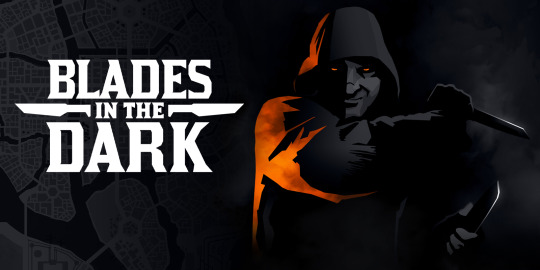
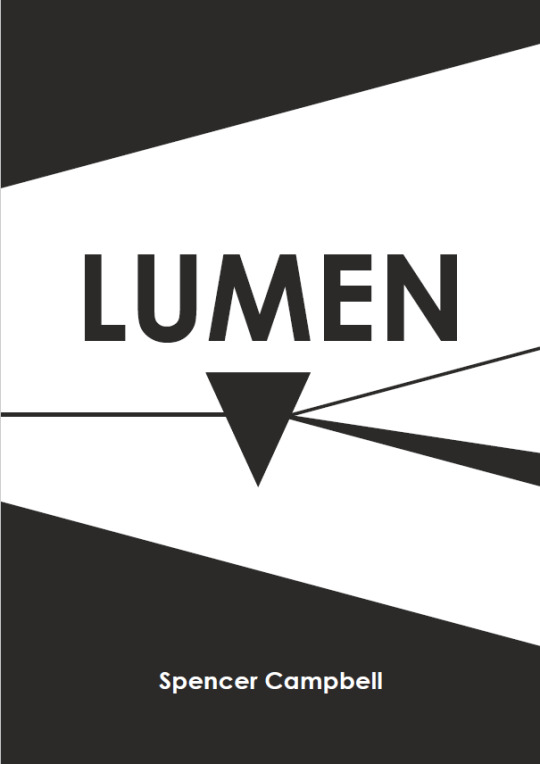

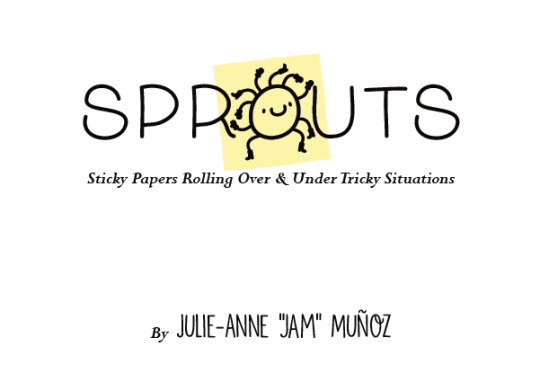
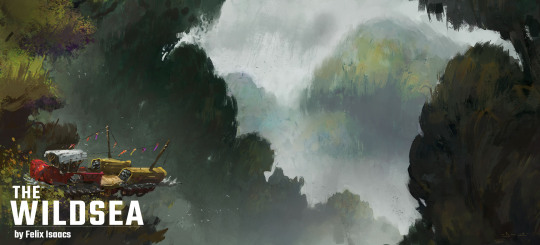
Blades in the Dark by John Harper
Yeah, yeah, I know, this game is talked about a lot! But consider me a recent student of TTRPG history outside of d20 systems. I got the chance to play this game for several sessions and read the rulebook cover to cover. The stuff that works, really works. The stuff that doesn't? Bogs the whole thing down. But I find clocks to be such an intuitive mechanic, and downtimes is really a delight to me. There's a whole ton of Forged in the Dark stuff that toggles a bunch of the game's switches on and off to make things more streamlined. Was very glad to read this one.
Lumen by Spencer Campbell (GilaRPGs)
I made it a mission to read SRDs this year. I want to understand the how and why of the games I've been reading: why are they built the way they are, what is accomplished in building them this way, and can I build games this way myself? Spencer has a really solid handle on what he wants his games to do. They're power fantasies with little if any chance for failure. It's not about whether you do the thing, it's about how. I ended up having the chance to meet Spencer at GenCon, and I'm really excited to see Lumen 2.0, which is going to be completely diceless. Power fantasy games aren't my thing typically, but I really appreciate the intentionality of this system's design.
Are My Wings Even? by Sadia Bies
What a lovely, simple game that lets you play dress-up! This one isn't necessarily as polished as some of the others but you can tell it was designed with so much care and personal meaning. I love a tactile game. I love dressing up. This one has so much potential to be really tender. It won't be for everyone and that's okay, but I really adore it.
Sprouts by Julie-Anne "Jam" Munoz
This game came to me in a bundle for Trans Rights in FL, but I actually dug into it when I was looking for RPGs to play with kids. You draw your character on a post-it, and it's just a silly little guy! It has a pretty simple roll mechanic and advises a "get from point A to point B" adventure style, which takes place in actual 3D space in your home, because didn't you know? Sprouts live in your home, like dust bunnies! It's got really great language for children and emphasizes cooperation, and that you can't mess up your drawing - sprouts are sprouts.
The Wildsea by Felix Isaacs
I know, I know, I talk about this game too much! But really, it's been the gateway into other games for me. I think technically I probably read this last year, but I had to brush up for GenCon this year, so I'm counting it. Lots of folks have compared the tracks in this game to Blades' clocks, but they sprang up parallel, funnily enough! It has some definitely shared DNA in its design, and it rewards you for things out of combat more than things in combat, if that's how you want to play. The setting is lovely, the community is lovely, and really it was a joy to read, even as long as it is.
I'll do another of these soon, I imagine.
#the lady rambles#game roundup 2023#well I had more to say than I thought#trying to grab some big stuff and some small stuff
111 notes
·
View notes
Note
Hi! I would like to try my hand at making my own ttrpg, but I have NO idea where to start, tbh.
Do you have any tips? Do you know of anywhere to discuss designing this stuff?
Hey that's super exciting! TTRPG design is a ton of fun and can be super rewarding!
So some general advice, based on what I've learned and also have heard from others.
Start small! Smaller than you think! Diving straight into the deep end with a big ol' fantasy heartbreaker is the road to never getting anything done. So scope out something that you know you can finish. Maybe that's a new class or playbook for a game you already like! Maybe it's an expansion or set of new subsystems! Maybe it's an adventure (though adventure writing can be it's own can of worms, but don't let that stop you hahaha)!
If you want to go bigger, maybe look at hacking a system or engine you like! I'm a huge fan of LUMEN as a fun to pick up and experiment with engine. Also, the LUMEN SRD (system reference document) is a very nice set of "how to do LUMEN games", which is very helpful. There's also other open systems/engines/SRDs like 24XX, Caltrop Core, and Breathless that could be great to look into. Powered by the Apocalypse and Forged in the Dark are both fantastic engines/systems to design in, but are also much harder to really get the hang of (and while Blades in the Dark does provide an SRD, it's a good rules reference, but not a great "how to" reference).
If at the end of all that, you decide on making your own bespoke system, go for it! See what happens! Try and figure out the focus on what you want your system to do (generalist games are always harder to make, imo), and then really dig into that. But I think starting with SRDs/hacks/expansions is going to be a way better start than trying to do everything from scratch.
Make something and don't worry about ever sharing it! This is also just general artistic/creative advice, but the first things you make prooooobably won't be your best and that's okay! I have loads of early design material and scraps that will never see the light of day, but working on them I learned a lot! If you do want to share things, it's fine to just share it with friends, you don't need to worry about publishing or any of that. Just remember to stay focused and work towards finishing something, because then you can start on the next thing. And the next thing after that! TTRPG design is a skill that takes practice. You can try focusing on one design idea in one project, and then work on a different design idea on the next to build up your skill set.
Play, read, and run a lot of different games! It's like with writing, the more you read, the better a writer you can start to become. You learn a lot about ttrpg design by interacting with ttrpgs. If you don't have regular groups to play/run things with, then try and read a lot of different games of all different systems and styles! All that you're absorbing is going to give you fuel for your own designs, and sometimes you learn something really cool from unexpected places (like, I could not have imagined the impact that learning about a lot of OSR design stuff would have on my own design, even though I don't consider myself a strictly OSR designer).
Don't worry about what other people are making! This is just the "two cakes meme", but even if you find out someone is working on something similar, it is always worthwhile to pursue your own vision.
This is getting long, so I'll wrap up that section and move on to the second question.
I think there's a pretty solid community of TTRPG designers here on tumblr these days, so you can try getting discussions going here! I also do a lot in various discord groups. I personally really like Plus One EXP which is very friendly to newcomers and has pretty active design discussions (I also publish some stuff in print through Plus One, full disclosure).
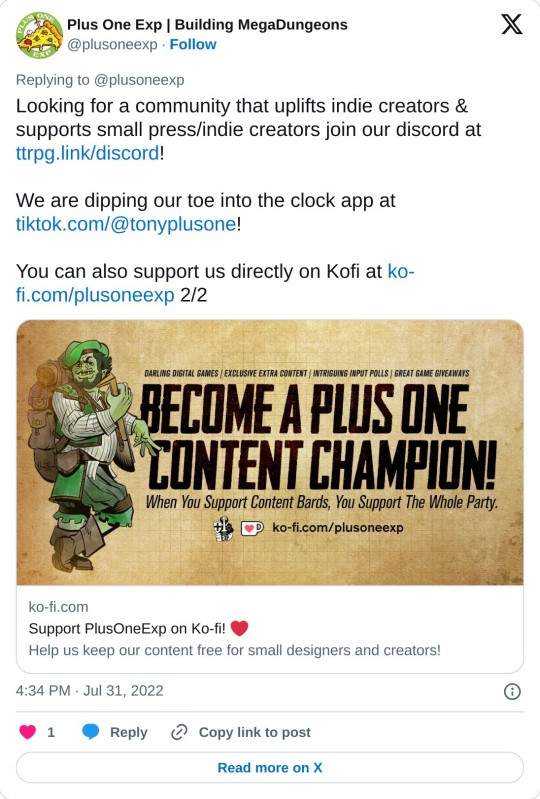
If you're looking for more spaces, asking around there probably wouldn't hurt either.
I'm also always super down to discuss TTRPG design at like, the drop of a hat. So feel free to shout in my inbox anytime!
Best of luck on your journey, and can't wait to see what you do!
38 notes
·
View notes
Text

For Truth's Sake is a solo-journaling game based in the ideas of anthropology and field work. You play as an anthropologist living and working in a community of your choosing. Pull cards and roll dice to determine who you talk to/where you go and what questions to ask. The game uses a "trust points" system - you gain and lose trust points by playing and interacting with NPCs and locations!
THE SRD | $2 with community copies available || itch.io | ko-fi
This SRD provides you with core rules and explanations on how to build a setting to explore on your own time!
Also comes with examples and questions to get started. Included is a creative license for making your own settings.
SETTINGS
Each setting comes with 20 NPCs, 12 locations, and 12 events that you can interpret as you wish. They also come with the full core rules and set of NPC and Location questions.
WEREWOLF NEIGHBORHOOD | $5 || itch.io | ko-fi
A pack of werewolves lives together in a suburban area. They hang out, connect with each other, even hunt together. Do they live in a world where they can openly be werewolves? Or do they have to hide who they are? How is the pack set up? Do they talk to other packs? Talk to NPCs, explore locations, and attend events to find out!
URBAN WITCHES | $5 || itch.io | ko-fi
A coven of witches lives, eats, and games together in an apartment building in a large city. Is this a city full of magic? Or are they the odd ones out? How do they connect with each other? With other people in the city? With their landlord? Explore the NPCs and Locations to discover all there is to find out.
FEYWILD INN | $5 || itch.io | ko-fi
An inn nestled in an odd space between what we consider reality and the wilderness that some call the feywild is home to an interesting group of fey and humans alike. Are they living together in harmony? Are the fey preying on the humans? Or is your bias showing through?
Remember, it’s polite to eat what a person that has invited you in offers you.
#for truth's sake#indie ttrpg#indie game#solo journaling game#moon.txt#my game#anthropology#fieldwork#pls reblog <3#every reblog matters
109 notes
·
View notes
Text
Now at IPR: Galatea!
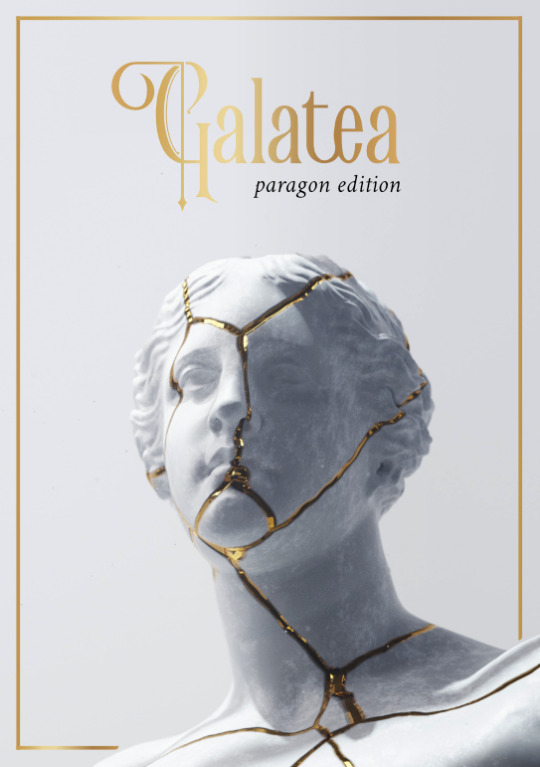
You were made to be perfect.
Your creator is a brilliant artist - celebrated, lonely, tormented - who has never been satisfied with his creations. Until now. His magnum opus, his crowning masterpiece, the pinnacle of his art - is you. And yesterday you came to life.
You must remain perfect for him - or else.
Galatea is a solo journaling RPG based on the Wretched & Alone SRD, but takes significant departures from other games of the genre. Awaken in the story of a sentient masterpiece striving to live up to your creator's expectations. Choose how to build up your confidence and self-knowledge before you start undermining your own foundations. Explore the wider world with tarot cards or standard playing cards, with different rulesets for a customizable experience. Try to retain the favor of your creator. And leave behind a legacy for the next creation to follow you - or disappear without a trace...
https://www.indiepressrevolution.com/xcart/Galatea-Print-PDF.html
34 notes
·
View notes
Note
Hey, Lex, got a question. At some point in the last two decades, somebody in the indie space mentioned that it was all well and good to develop a system, but that what a lot of games lack is support, and that supplemental material like monster- or magic-folios or adventure modules or what have you. The argument was something to the effect that we have sort of a lot of one off, single page or even whole simulation systems, but once you have the base thing, there's not really much suggested to do with it, and while plenty of GMs and tables don't need help getting started, plenty do.
Is this anything, y'think? Do you have thoughts on the subject of supplemental material? Do you think it "helps" your ttrpgs, for whatever metric that... is measuring, lmao.
Hey! I've heard this here and there, and I'll share my thoughts as a relative newcomer (I'm around the 2.5 year mark of seriously making my own games).
I don't think it's a problem to have one-off games and barebones systems. In fact, make it as barebones as possible, and you have yourself an SRD essentially. We all know I love me an SRD.
That being said, the whole deal with Caltrop Core (my first SRD) was lowering the barrier to entry for people to start making games. If you can sufficiently lower a barrier, it'll be much easier for people to start. It goes for full TTRPGs as well. An ecosystem of support is the dream for any system, but the step I take before that is including materials in my game to help people get started.
Even though I don't consider myself the type of player who needs the extra help/content, I still like seeing a starter adventure or a table of ideas, as it helps me find where to start. Examples of play are also a big part of this. Wanderhome does a really nice job of this (is there anything this game doesn't do a really nice job of?).
Identifying the action you want someone to take and doing everything in your power to minimize the friction/number of steps between that person and the action -- that's digital marketing in a nutshell.
People mostly apply this thought process to sales, but it works for everything. When I'm finishing up a game, I'm concerned with one action in particular: someone actually playing my game.
As indie devs, it can often feel like no one actually plays our games. (Side note: I think it's worth making peace with this aspect of indie publishing. I make games because I like making games. If people play my stuff, great. If they don't, okay. I would have made this thing anyway.) If this is something you're worried about with a project, I believe the best thing to do is identify the type of supplemental material that will bridge the gap from reading the game to running/playing it. To me, that's what "helping" my TTRPG means. I often see quickstart one-pagers for medium sized games, and I think that's a really strong option.
You also do not have to have this supplemental materials ready when you first hit "Publish" on itch.io or wherever. For one of my own game jams, I wrote a minimum playable version (MPV, is that a thing?) of HEXFALL. Then later I went back and added a bunch of materials (new hex types, new maps, new examples, new story hooks) to help people get started as easily as possible. I pitched it as an expansion, and even came up with a cool dramatic subtitle which I always love doing.
It's really up to the designer and where they're at. If you're out here trying to build a publishing business, then I think this type of material should be included in your base game. Hobbyists should do whatever is most fun for them.
Thanks for the fun question! I hope I answered sufficiently!
35 notes
·
View notes
Text
Evil Undead, revisited
As a veteran GM, I feel that kids these days complain more about the brute fact or moral law of Evil Undead in D&D or similar games, and I get questions from people wanting to use necromancy for good purposes like having tireless skeletons plow a field. Shouldn't that make up for the [Evil] tag on spells like Animate Dead? Why is that tag there, anyway?
With a caveat that "Undead" in fantasy is a kinda vague category which can reasonably have some special cases and cosmological exceptions like repentant ghosts, here's an attempt at describing how "core" undead like skeletons and vampires still count as evil and can be smote with Smite Evil, and making them is evil even if the necromancer has good intent in contemporary terms. This is mostly written with reference to D&D 3.5, which I like for its SRD, but the principles can be used elsewhere.
TL;DR: Making undead is like a faustian bargain but with Death instead of Mephisto, and every hand you lend to Death in the world is a corrupting influence even if you get something good from it.
The TLDR is inaccurate because the implicit contract is with the negative energy plane instead of a demon or avatar. Now for the long version:
In the example of the plowing skeletons, the questioning wizard is presumably treating the plowed field as an end and the skeletons as a means to that end - he's not doing necromancy for its own sake.
So he could cut out the necromancy part. He could use Animate Objects instead of Animate Dead, and make the plow move itself. (Or build a golem, but that's another story.) But notice that Animate Objects is a higher level spell than Animate Dead, as well as being temporary. Making it permanent requires another high-level spell. Wizards (and D&D players) are prone to optimizing towards Animate Dead, because it seems to be an easier and better way to achieve the desired effect.
But why does this lower level spell work better? My answer is that when casting Animate Dead, something else is providing much of the power, and that "something else" is the Negative Energy Plane. It is the plane of annihilating everything that exists, and is not on your team. You should not be contracting with it for power. Casting Animate Dead is evil because it's teaming up with an omnicidal maniac in cosmological form.
The Negative Energy Plane is arguably not strictly speaking able to power anything, because it's negative. It's a convenient shorthand to speak of "negative energy" when referring to a drain on positive energy. An undead creature produced by Animate Dead or a similar spell contains a tiny portal-conduit to the Negative Energy Plane through which light and life and heat are sucked out of the world (=negative energy flowing in) powering a magic "turbine" that makes the undead go.
Some advanced undead creatures have the power or fine control to weaponize this conduit, thus the various life-drain and energy-drain abilities possessed by vampires and wraiths and such. Different undead have different configurations and need to feed on the living more or less often, while others get by with environmental drain. Even the environmental ones can be deadly in large quantities. The Libris Mortis splatbook hints at this, and I've taken some of my inspiration from a discussion thread on that book:

This has a bunch of fun implications that match up with other narrative roles of undead and horror tropes. That crypt (haunted) which seems unusually cold? Undead are sucking the heat out. Candles suddenly blowing out? Undead!
Even though the minor drain of a skeleton doesn't amount to hit-point-damage on the scale of combat-time (the usual metric of D&D effects), it's still a creature that leaks negative energy/sucks the life out of its surroundings. Using that to plow your field is a bad idea.
That's an immediate and practical impact; in a high fantasy setting you can get more fantastic about it. Perhaps the tiny negative-energy conduits in regular undead also serve as windows for necromancers and negative-energy-beings to look on the living world, or worse, perhaps the portal is two-way. A skeleton contains a tiny hole in the planar fabric through which The Unmaker can reach, whether to affect the world directly or to seize control of the undead.
Note: your players may still insist on trying to find a utilitarian use for this sort of life-draining undead, like a haunted refrigerator that stays cold because the ghosts are sucking the heat out of it. If they're insistent, I suggest saying "Yes, but" instead of "No", and then run with the fun implications and second-order effects of binding a dozen ghosts just to store food (obviously one ghost won't cool it enough) and what normal people will think of the Superhaunted Doomfridge. Maybe the paladins will send a complaint letter. Your PCs are Good enough that the paladins will send a letter rather than showing up to Smite Fridge immediately, right? ;-)
And now I'm imagining the Paladin Job Board posting, with the headline saying "Destruction of Evil Artifact" in big letters and the fact of "it's a fridge" in the small print.
56 notes
·
View notes
Text

name: Princess Sophia Griselde
race: Warforged
class: Paladin (Glory)
characterisation: Once, there was a wise - yet headstrong - princess, who at her age did not yet have the responsibilities she craved. She was constantly eager for a chance to prove herself, and it was her greatest folly - for she interfered in a meeting with a king of evil, and her soul was cast from her body.
When she awoke next - what time had gone past, she didn't know. She thought the strange happenings were a dream, and reached to rub the sleep from her eyes - only to be greeted with an unearthly sound of metal on metal. Confused and concerned, she stumbled her way to a mirror, and saw her reflection as a suit of armour.
After a moment of disbelief, she was forced to ground herself in reality, and accept the truth of her situation. Her end goal - to regain her body. But to do that, she would need to learn to fight in her armoured prison, no matter how much she disliked the idea. And, she reasoned to herself, the armour would protect her if she gave in to headstrong instinct again...
-
inspiration: Zelda (Spirit Tracks - Phantom ver.)
if only paladins could work off wis instead of cha...
aaaanyway. phantom zelda best zelda, fite me. though all the zeldae that actually do anything are good. but spirit tracks was a childhood favourite of mine and I am SO mad about the european name changes. staven WHOMST his name is BYRNE
alright to the actual stuff, though this one's pretty simple. warforged (or autognome if you want to be comically smol) is the best choice for a possessed suit of armour imo, not needing to deal with the potential for exhaustion characters just permanently wearing it would. paladin is also a simple choice - devotion has all the fancy light stuff Zelda tends to use, as well as fitting if the triforce of wisdom/hylia/nayru etc is the paladin's deity.
alternatives: reborn could work, though not as well; she could also be an armorer artificer stuck in the armor - for that, or for if she regains her body, I would recommend an elf, or a race associated with wisdom in some way such as owlin.
-
share link: https://www.heroforge.com/load_config%3D33604857/
#heroforge#dnd#zelda#tloz#spirit tracks#srd builds#name origins:#sophia means wisdom in greek;#griselde is from griselda#which is the name zelda is derived from#but seriously#staven W H O M S T
12 notes
·
View notes
Photo
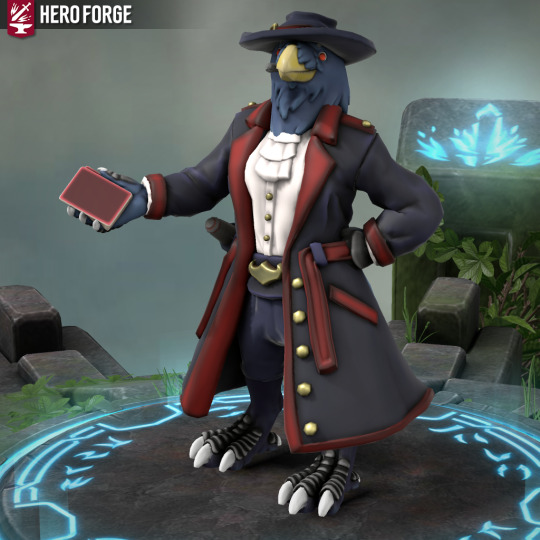
name: Raban ‘the Riskfeather’ Talonscrape
race: Kenku
class: Rogue (Mastermind)
characterisation: A level-headed, ex-gang leader with an eye for detail. Calm and composed even in the worst of situations, they’re always looking for ways to twist the situation in their favour: quickly calculating risk/reward in their head for any given action, never afraid to retreat to get a better position, ruthlessly striking when the time is right.
After their gang was obliterated in a surprise attack, they were forced to flee with the few remaining members. Knowing that they would need to go far afield to not be hunted down, Raban focused on finding new homes for the ex-members first rather than leaving them to their fate - a final thanks for their loyalty, knowing they may never see each other again.
They enjoy gambling, and are remarkably good at it, reading their opponent with ease and manipulating them into the desired outcome. Their mimicry skills are often used to unsettle their opponents as they mimic every little action, breaking the opponent’s concentration or leading them to common mistakes.
While they rarely show emotion other than a slight smile if plans are going their way, occasionally people who they truly care about will break their composure, if only for a second. They treat their subordinates and allies with respect and kindness to ensure their loyalty, and this sometimes develops into a true bond - although they would never admit it.
-
inspiration: Honchkrow
pretty clear choice again today! there’s definitely some more difficult ones coming up, though... the main question here is why kenku over a flight-capable bird? kenku mimicry and forgery works very nicely with the mastermind’s skillset, especially as the two’s mimicry abilities work somewhat differently, rather than one being redundant.
I made them less ruthless than Honchkrow’s dex entry normally implies, as I don’t see a PC who believes themselves above every other PC and punishes their mistakes harshly as fun for other people to play with. so now the ex gang leader is a better boss than a lot of bosses out there. towards their enemies, though...
you could do a fun thing where other party member(s) are their ex-members who refused to leave them, to link the party together some! while I visualise them all as smaller kenku because Murkrow, they could be anything~
fun fact, they look very similar to a lawyer kenku I made once based off that one gif of Edgeworth bowing. take that how you will.
-
share link: https://www.heroforge.com/load_config%3D29489514/
#srd builds#d&d#dnd#dungeons and dragons#dnd character#character build#heroforge#kenku#dnd kenku#rogue#dnd rogue#mastermind#mastermind rogue#pokemon#honchkrow#sinnoh#I forgot to tag oops fixed now
10 notes
·
View notes
Note
Any games about cross-country racing or just racing in general? I've had this setting with this grand race for riders of fantasy creatures and its rough trying to find a game that fits it.
THEME: Racing Games.
Hello friend, so I have some good news and some bad news for you. The good news is that I found a number of racing games! The bad news is that all of the games I found are built with the expectation that you are racing machines, not creatures. I don’t think that makes these games completely non-viable, but pretty much all of them will probably need a little bit of re-wording or hacking in order to become games about racing living things.



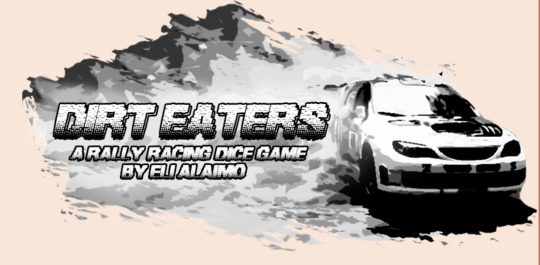
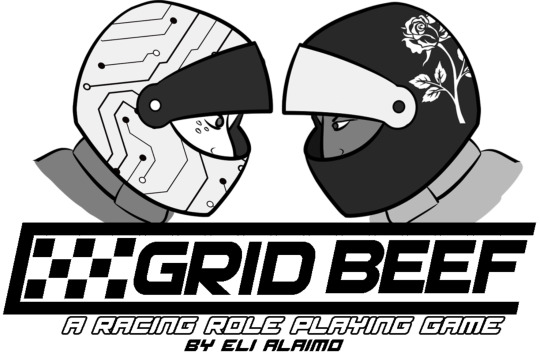
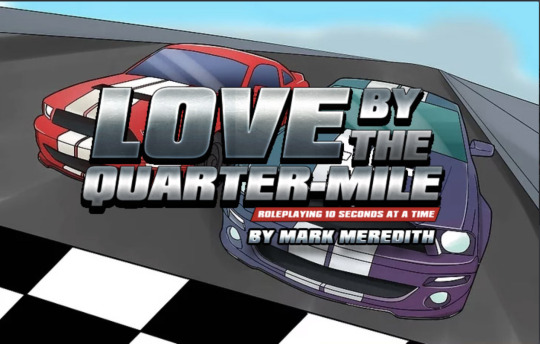
SUPERSTARS Racing Icons, by Tristan B Willis.
The air screams around your helmet as you hurtle past the final turn and towards the finish line. Your best friend looks to make a pass that could take both of you out. Do you play it safe and risk losing, or play for glory and risk everything?
Welcome to Superstars: Racing Icons.
Trophies are nice, but racing careers are short and you’re here to build something that lasts. Is that a rabid group of loyal fans who follow your every move? A list of sponsors willing to keep you comfortable long after your racing days? Or just one meaningful connection with a teammate, a rival, a friend, a lover?
The designers expect you to translate this game into a setting that works for you, but plenty of the language expects elements like sponsors, a PR team, and vehicle terminology. The game is GM-less and comes with a menu of backgrounds, which define your character’s narrative role in the race.
Because Superstars is a Firebrands game, instead of freeform play the group instead moves through a series of scenes, embodied through various mini-games. This means that this game is well-built for telling some kinds of stories, but not others. Much of the game is about the tension between the riders; the races are simply methods through which you can explore that tension.
If you want a game that is focused on the spectacle of the race as much as it is on the race itself, you might want to take a look at Superstars: Racing Icons.
Speedway Showdown, by Bammax Games.
Speedway Showdown is an ultralight, GMless minigame for two players that aims to quench your need for speed! Built on Cezar Capacle's Push SRD, Speedway Showdown begs you to put the pedal to the metal and take risks to walk away with the glory. Take a single turn on the tracks and reap a lone victory, or form your own circuit with your friends and race for the top of the ranks!
This is a business card rpg, so it’s very simple and therefore probably pretty easy to hack. Instead of damage to your car, your creature might get wounded or spooked, and you can replace mechanical benefits to reasons why your creature might suddenly get a boost of speed. This is also GM-less, so everyone can throw their hat in the ring for the title!
The game is probably going to be over pretty quickly, since there’s not much to it, so this would be a good set of rules to couch within a larger game.
Ghost Kart Racers, by kumada1.
Lord Aoyama was your master. He wronged you and killed you, but in doing so he made two mistakes.
He angered your spirit.
And he left an unsecured motor-kart in his stable.
Ghost Kart Racing is a 20 page supernatural racing trpg in which you shred rubber, use power-ups, and unhinge your entire face to devour the man who wronged you.
This is a multiplayer game that relies on different sided dice to represent your Kart (or perhaps, in your case, your Steed). You take turns flicking your dice towards a finish line, with the goal of hitting it exactly, with falling short being considered just as bad as overshooting. The game also comes with extras for customizing your racers, creating custom tracks, and adding Charms that change how your vehicles work.
I think the rules for this game can definitely be separated from the story that the designer has introduced, and the idea of having different steeds with different strengths may make sense if each racer is riding a different creatures. You could re-tool the charms into abilities that different fantasy creatures might have, such as a glowing body part or the ability to jump over low obstacles. The game also has optional skills that represent your character’s abilities outside of racing, which you could change to reflect what your characters might need to be good at when they’re not out on the race track.
Dirt Eaters and Grid Beef, by e.a.
DIRT EATERS is a dice game where players compete to see who can get the best score driving their cars through dangerous tracks! Players build the tracks through dice rolls, ranking each sector on a scale from 1-5. Rolling six sided dice, players have to get a number of successes equal to the difficulty of each sector to score a point. The more dice you use, the harder you're driving, and the more damage your car takes! Replenish your dice by 'repairing' your car between stages. It's a game of resource management, strategy, and a little bit of luck!
GRID BEEF is a roleplaying game about racing. In this game, players will be racing cars against one another in a series of events across the world. In between races, they'll form friendships, clash with bitter rivals, and be submerged in the world of politics and drama that comes with racing at a world championship level. Sometimes, the biggest drama happens off the track!
Both of these games follow the same core mechanic, in which a number of d6’s are rolled and the results over a certain number are counted as successes. While DIRT EATERS focuses on damage and hazards, GRID BEEF is more about the relationships between the racers, and how you interact with people affect your performance on the track. I think the core rules can work on their own, and the outside elements are examples on what can affect the race depending on what is important to you. In both cases, there’s probably a good amount of hacking and home-brew that you’ll have to do, but the benefit of looking at both of these is that you can see examples of how the core game can be re-tooled to focus on elements that matter to you.
Love by the Quarter Mile, by Dice Monkey.
Rev your engine and prepare to fire the NOS. In Love by the Quarter-Mile, you play as a street racer trying to make it while fighting for family. This one-page tabletop RPG is quick and dirty, providing you with everything you need to use to play games in the same vein as Fast and Furious and Gone in 60 Seconds.
This is another short game that I think can be very easily hacked to turn this game into a game about racing animals, rather than racing cars. You can replace the car tags with animal tags to differentiate the creatures that you are riding. However, being fast isn’t the only asset you have here - the game is also about fighting and personal relationships. You can fight rivals or other characters, and the rules are loose enough that you could use fists, or weapons that match your setting. You can also have arguments that can tax your emotions, so if there are personal stakes in the competition, you can enjoy some hair-raising drama in between each race.
Also Check Out
Gravity RIP, by lukewestaway.
31 notes
·
View notes
Text
TTRPG Release: Her Odyssey Risograph Edition!

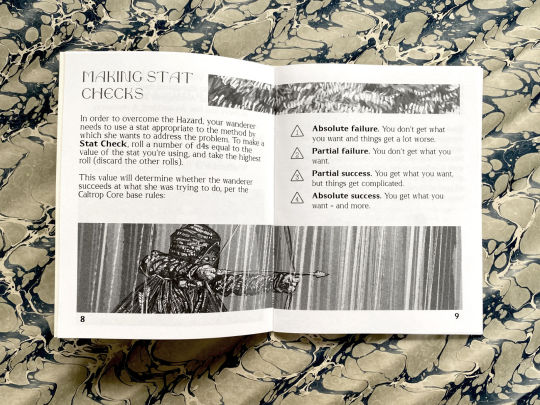
Her Odyssey is a solo journaling RPG about a wanderer trying to return home - or find a new home.
Originally released on Itch.io last January, my first TTRPG, Her Odyssey, is now out in physical zine format! I'm thrilled to partner with Knave of Cups to produce this all-new edition with bespoke art and layout by AYolland.
What is Her Odyssey?
A rules-light single-player RPG following a wanderer who has lost something, is shadowed by something from her past, and/or is seeking something... How long will it be before she can find her way home?
Perfect for helping you build out a rich world, explore the backstory of a mysterious character, guide you on a grand journey - or all three at once
Endlessly flexible and customizable, with dozens of open-ended Hazard prompts and four optional variant rules for the perfect genre and level of difficulty
Requires a deck of cards, a handful of d4s (at least one, but five is ideal), and a place to record your story
Ideally played as a daily ritual for a game lasting up to two months per playthrough - or can be played in four to six hours in a single sitting
Originally built on Caltrop Core by TitanomachyRPG, and became the forerunner for my own Aspire SRD
You can get this limited-edition Risograph Zine for $12, exclusively at Knave of Cups. (And you can also pick up a pack of d4s and a deck of playing cards there, if you need them!)
And you can also pick up a PDF of Her Odyssey - both the original edition and the updated-layout version - for free on Itch.
62 notes
·
View notes
Text
Currently obsessed with 2400 by Jason Tocci, huge thanks to @unseenphil for bringing this game to my attention. Or these games. Cause 2400 is more like a big collection of lots of little two page RPGs built under the same system. The system's got shades of Blades in the Dark but simplified (instead of larger dice pools increasing dice size is the big thing) but since the rules are so trimmed down (taking just one page) the big thing is one page dedicated to various random tables and setting details. [EDIT: The author does not list Blades in the Dark as direct inspiration. The major influences cited are Electric Bastionland, The Soft Horizon, Ghost/Echo, and Script Change, and while still somewhat similar to BitD the Ghost/Echo lineage is more direct and obvious with a bit more inspection.]
The game's also got a free SRD available which is also very clear on the thought process that goes into building 24XX games, so producing your own games using the system is really easy.
I also really dig the aesthetics of these games.
91 notes
·
View notes
Text
Treant Reaper

“Arboreal Reaper” © Paizo Publishing, accessed at Archives of Nethys here
[I still don’t like “arboreal” as the SRD-free name for treants. “Arboreal” means “living in trees” not “an animated tree”, damnit. But I do like the ways that Paizo has expanded the arboreal/treant family. Making one focused on decay is a cool concept, and making it look like a strangler fig is an excellent choice of aesthetic.]
Treant Reaper
CR 7 N Plant
This stunted, leafless tree has a humanoid face and a vaguely humanoid shape. Long roots and tendrils grow from its legs and back, and its bark appears warped and worn.
Treant reapers are smaller, more sinister-looking relatives of treants. They are not evil, but are enamored with decay, fungal creatures, and other aspects of rot and regeneration. They gain their sobriquet from their habit of finishing off slowly dying, suffering trees, allowing their nutrients to be absorbed by other creatures and recycled. They are most active during the autumn and winter in cold or temperate forests, but may be on walkabout throughout the year in tropical rainforests.
A treant reaper is quicker to act with violence than a normal treant is—they are especially hostile towards loggers who would remove the wood from a forest to decompose, or those who wish to burn a forest down for a short pulse of nutrient rich ashes. They typically try to attack from ambush, lobbing barbed thorns from range or draining the moisture from enemies in an attack similar to a horrid wilting spell. Enemies that close the gap are battered with the reaper’s fists, and with the roots that grow from their legs and back. Treant reapers are happy to fight to the death, as long as they can be sure that their nutrients remain in their forest.
The forests that are protected by a treant reaper often gain something of a sinister reputation. Wicked druids and witches may feel at home in these forests, and undead sometimes lurk beneath their boughs. As long as these beings do not harm the cycles of nature, the reaper pays them no mind. Treant reapers often plant their seeds in ruined buildings or on top of dead trees—the sprout draws nutrients from these structures and breaks them down with their roots before uprooting itself and entering its mobile adulthood.
Treant Reaper CR 7
XP 3,200
N Large plant
Init +2; Senses low-light vision, Perception +13
Defense
AC 20, touch 11, flat-footed 18 (-1 size, +2 Dex, +9 natural)
hp 95 (10d8+50)
Fort +9, Ref +5, Will +5
DR 10/slashing; Immune plant traits
Weakness vulnerable to fire
Offense
Speed 30 ft.
Melee 2 slams +12 (1d10+6), 2 tentacles +10 (1d6+3 plus trip)
Ranged 2 thorns +8 (1d8+6 plus bleed)
Space 10 ft.; Reach 10 ft.
Special Attacks bleed (1d8), leech moisture
Spell-like Abilities CL 10th, concentration +14
Constant—speak with plants
3/day—vampiric touch
Statistics
Str 22, Dex 15, Con 18, Int 15, Wis 15, Cha 18
Base Atk +7; CMB +14 (+16 trip); CMD 26 (28 vs. trip)
Feats Combat Expertise, Improved Trip, Multiattack, Nimble Moves, Toughness
Skills Climb +14, Intimidate +12, Knowledge (nature) +10, Perception +13, Stealth +9 (+13 in forests); Racial Modifiers Stealth +4 in forests
Languages Common, Sylvan, Treant, speak with plants
Ecology
Environment any forests
Organization solitary or grove (2-7)
Treasure standard
Special Abilities
Leech Moisture (Su) As a standard action, a treant reaper can drain the moisture of a single creature within 50 feet. That creature takes 10d6 points of damage (Fort DC 19 halves). A creature with the plant or ooze type, or the water subtype, takes 10d8 damage instead. A treant reaper can use this ability once every 1d4 rounds. The save DC is Charisma based.
Thorns (Ex) A treant reaper can throw one thorn as a standard action, or two as a full attack action. Treat this as a ranged attack made with a thrown weapon with a range increment of 30 feet.
81 notes
·
View notes